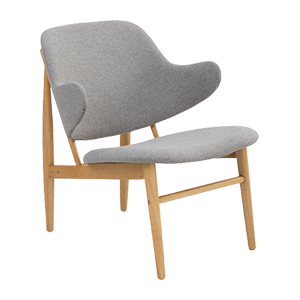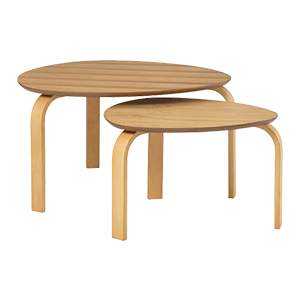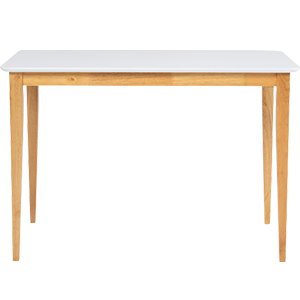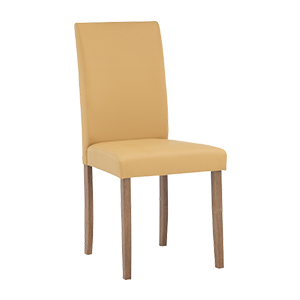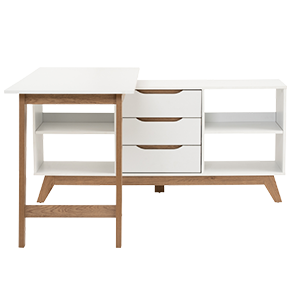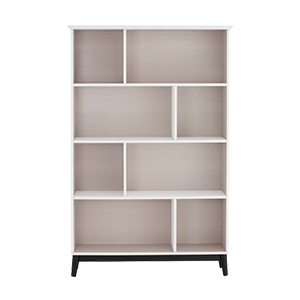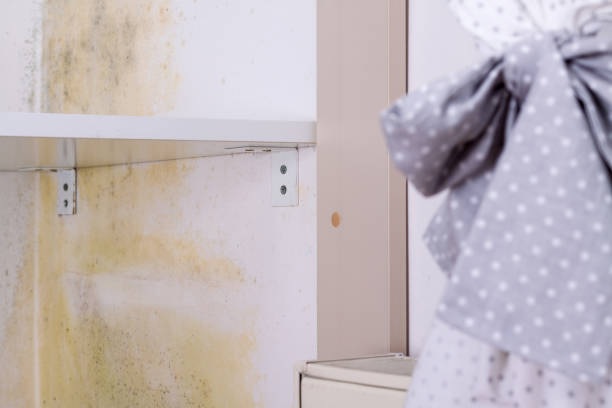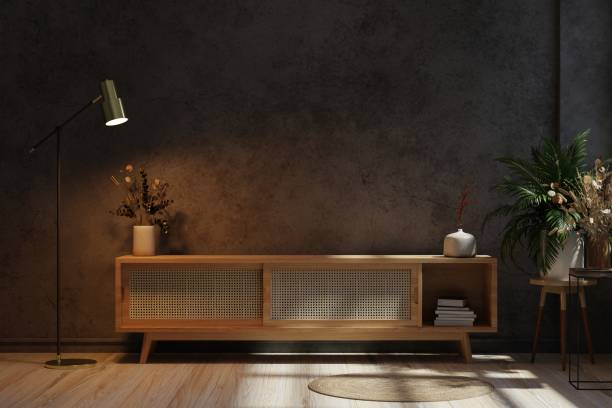
Types of Wood for Furniture: Which Is The Best?
June 9, 2023
9 Tips On How to Organise Your Storeroom
June 14, 2023
Types of Wood for Furniture: Which Is The Best?
June 9, 2023
9 Tips On How to Organise Your Storeroom
June 14, 2023How to Prevent & Remove Mould From Furniture

Mould can be a real hassle in homes and it can wreck your furniture if you ignore it. In this article, we're going to chat about some great ways to stop mould from growing on your furniture and how to get rid of it if it's already there. Just stick to these tips and tricks, and you'll keep your furniture in top shape while keeping your home fresh and healthy.
Understanding Mould

What is Mould?
Mould is a fungus that grows in damp and humid places. It spreads by tiny spores that float in the air and land on things like furniture. Mould can grow on different materials like wood, fabric, and leather, and it can leave ugly stains, make things smell bad, and even cause damage to the structure.
What Causes Mould on Furniture?
Mould on furniture is caused by too much moisture and high humidity, which is particularly relevant in Malaysia with its average annual humidity percentage of 81%. The humid weather and frequent exposure to moisture create an ideal environment for mould to grow. When there's too much moisture in the air, mould spores settle on furniture surfaces and start multiplying. Insufficient ventilation and poor air circulation make the situation worse.
To prevent mould on furniture, it's important to control indoor humidity, ensure good ventilation, and keep furniture surfaces dry. Regular cleaning and wiping off any visible moisture are also key to stopping mould growth.
Health Risks Associated with Mould
Besides affecting furniture, mould can also harm your health. Exposure to mould spores can lead to allergies, breathing problems, and even make asthma worse. So, it's really important to deal with mould issues quickly to keep your family safe and healthy.
Prevention Measures

To stop mould from growing on your furniture, it's important to take some proactive steps that reduce the buildup of moisture. Here are some helpful ways to prevent mould:
1. Ensuring Good Airflow
Having proper ventilation is really important to keep humidity levels low. It's all about getting fresh air moving and getting rid of excess moisture. You can do this by opening windows, using fans to suck out damp air, or even installing special ventilation systems in areas that tend to get damp, like basements and bathrooms.
2. Keeping Humidity in Check
Controlling the amount of moisture in the air is essential to stop mould from growing. You can use dehumidifiers in places that tend to be humid and check the humidity levels regularly. Ideally, you want to keep the indoor humidity between 30% and 50% to discourage mould from spreading.
3. Regular Cleaning and Care
Keeping things clean and well-maintained is a great way to prevent mould. By doing regular cleaning and maintenance, you can eliminate moisture sources and stop mould from growing. Use a mild detergent and water solution to wipe down surfaces like furniture, paying extra attention to areas that might get damp. Make sure to dry everything thoroughly and fix any leaks as soon as possible.
Removing Mould
If you discover mould on your furniture, it's important to act quickly to prevent further damage. Here's what you can do to effectively get rid of mould:
1. Safety Precautions
To protect yourself, make sure to wear gloves, goggles, and a mask before handling the mould. This will help prevent you from breathing in any harmful spores. Also, open the windows to keep the area well-ventilated while you remove the mould.
2. Try Natural Solutions
Instead of using harsh chemicals, you can use natural remedies to get rid of the mould on your furniture. These remedies are not only effective but also safer for you and the environment. Here are a few methods you can consider:
Vinegar: Vinegar is great for getting rid of mould! Just mix the same amount of white vinegar and water in a spray bottle. Spray the mixture on the mouldy parts of your furniture and let it sit for a few hours. Then, use a damp cloth to wipe the surface clean and make sure it's completely dry.
Tea Tree Oil: Tea tree oil is a powerful tool against mould. Mix a teaspoon of tea tree oil with a cup of water and give it a good mix. Spray the solution on the affected areas and leave it overnight. The next day, wipe away the mould with a cloth and make sure everything is dry.
Baking Soda: Baking soda is a natural deodorizer that can also help you get rid of mould. Make a paste by mixing one tablespoon of baking soda with a cup of water. Apply the paste to the mouldy areas and gently scrub with a brush. Then, rinse with water and make sure your furniture is completely dry.
Hydrogen Peroxide: Hydrogen peroxide is another great option for killing mould and preventing its return. Mix the same amount of hydrogen peroxide (3% concentration) and water in a spray bottle. Spray the solution on the mouldy areas and let it sit for 10-15 minutes. Wipe it clean with a cloth and ensure everything is properly dry.
Make sure you try out these natural solutions on a small and hidden part of your furniture first, just to be safe and make sure they won't cause any harm or change the colour. Also, don't forget to read and follow the instructions from the furniture maker, and it's a good idea to wear gloves to protect your hands when you're working with these things.
3. Professional Mould Removal
If you're dealing with a serious mould problem and natural remedies aren't working, it's a good idea to get professional help to remove the mould. Mould remediation experts have the right knowledge, experience, and tools to safely and completely get rid of mould from your furniture.
When choosing a professional mould removal service, make sure they're certified and have experience dealing with mould issues. They will assess how bad the mould problem is, use the right techniques to get rid of it, and take steps to prevent it from coming back. It's especially important to get professional help if you have health problems or if the mould has spread over a large area.
Protecting Furniture from Mould

Prevention is always better than cure when it comes to mould growth. To protect your furniture from mould, consider the following preventive measures:
Proper Placement: Position furniture away from damp areas such as leaky windows, pipes, or basements. Allow adequate space between furniture and walls to promote air circulation.
Use Moisture Barriers: If you live in a particularly humid environment, consider using moisture barriers such as plastic sheeting or moisture-resistant coatings on furniture surfaces to prevent moisture absorption.
Use Desiccants: Place moisture-absorbing materials like silica gel packets or activated charcoal near furniture to reduce humidity levels.
Regular Inspections: Regularly inspect your furniture for signs of moisture or mould growth. Catching the problem early can help prevent extensive damage.
Maintain Proper Humidity: Keep an eye on the humidity in your home by using a nifty device called a hygrometer. If things get a bit too damp, no worries! Just bring in some trusty dehumidifiers to keep the moisture under control.
By doing these simple things, you'll greatly lower the chances of mould invading your furniture and help it last longer. It's all about taking preventive steps and keeping your furniture in tip-top shape.
FAQs
1. Can mould on furniture be harmful to health?
Mould on furniture can be bad for your health because it releases harmful spores into the air when disturbed. These spores can cause breathing problems, especially for people with allergies or asthma.
You might experience persistent coughing, sneezing, and irritated eyes if you're exposed to mould spores for a long time. Some types of mould can even produce toxic substances called mycotoxins, which can have more serious health effects. It's important to take care of mould on furniture quickly to protect your health.
2. Are natural remedies safe for removing mould from furniture?
Using natural remedies like vinegar, tea tree oil, baking soda, and hydrogen peroxide can be effective and safe for removing mould from furniture. However, it's always a good idea to test them on a small area first and be careful when using them.
3. When should I seek professional mould removal services?
If the mould problem is big, keeps coming back, or if natural remedies don't work, it's a good idea to get help from professionals who specialise in mould removal. They have the knowledge and tools to deal with serious cases.
4. How can I prevent mould from reoccurring on my furniture?
To prevent mould from coming back on your furniture, make sure there's good airflow in the room, control the humidity levels, and clean and check your furniture regularly. Keep furniture away from places with moisture, and use moisture barriers if necessary.
5. Is it possible to salvage mould-infested furniture?
In some cases, you can save furniture that has mould, but it depends on how bad the damage is. It's a good idea to consult professionals who can assess the situation and help you decide what to do.
Summary
Having mould growing on your furniture can be a long-lasting and harmful problem. But don't worry! You can stop and get rid of mould effectively if you take the right steps. Safety is important, so make sure to wear protective clothes and keep the room well-ventilated when you remove the mould. By doing these things, you'll keep your furniture in good shape and enjoy a mould-free home for a long time.
Take the proactive step towards a mould-free home by choosing furniture that's both functional and durable. Shop our range of durable furniture in Malaysia and transform your home into a safe and inviting environment.


